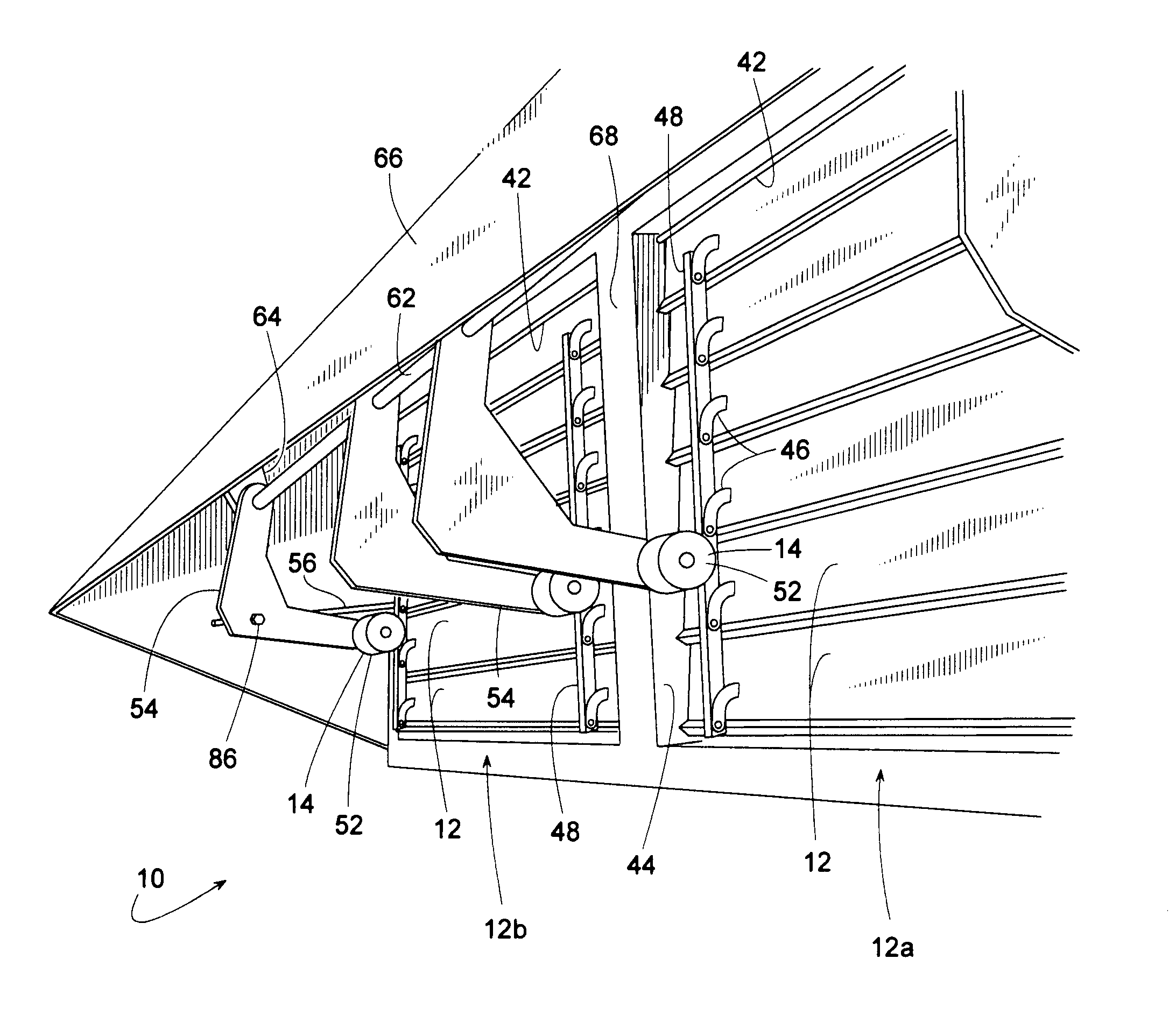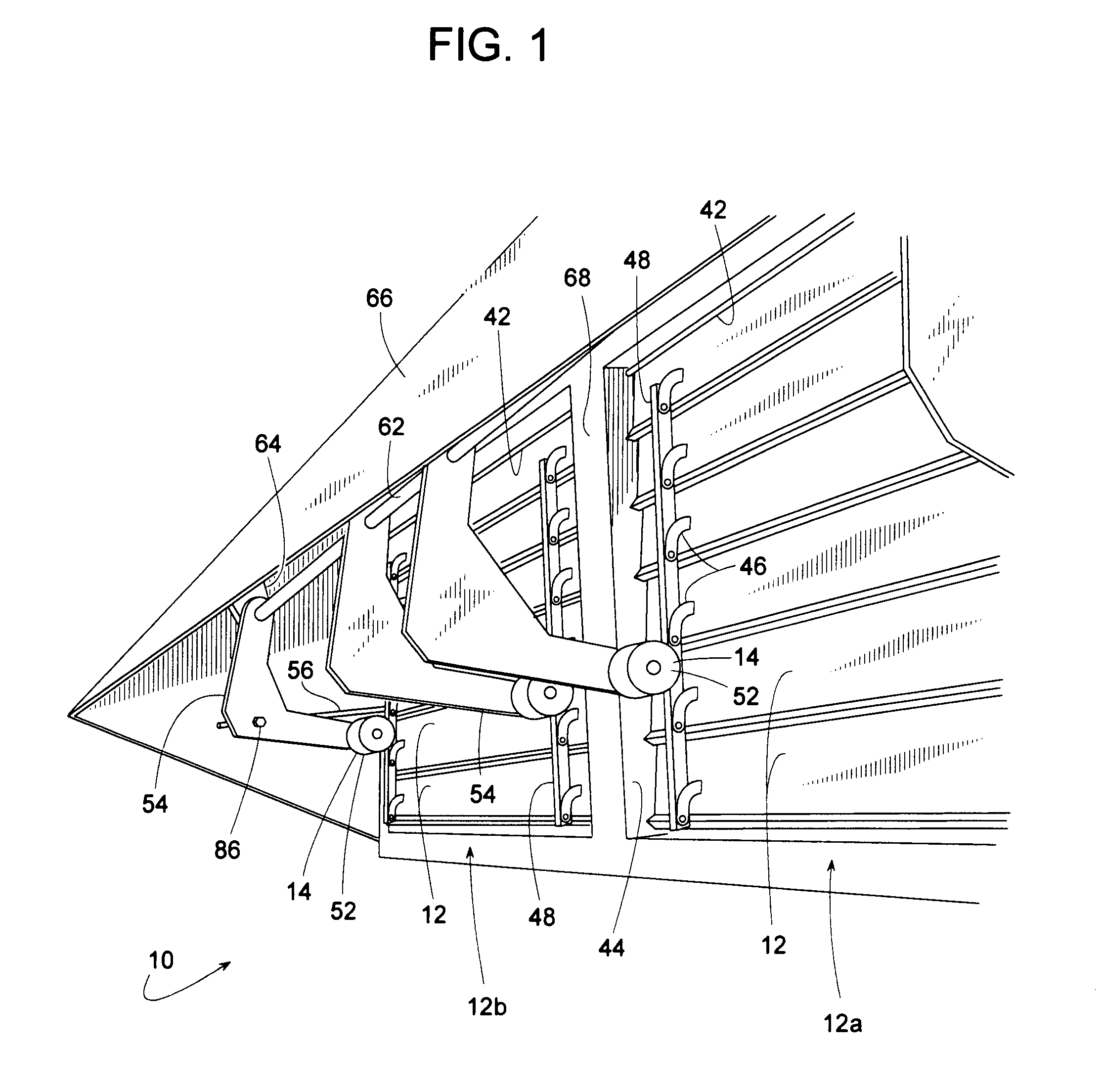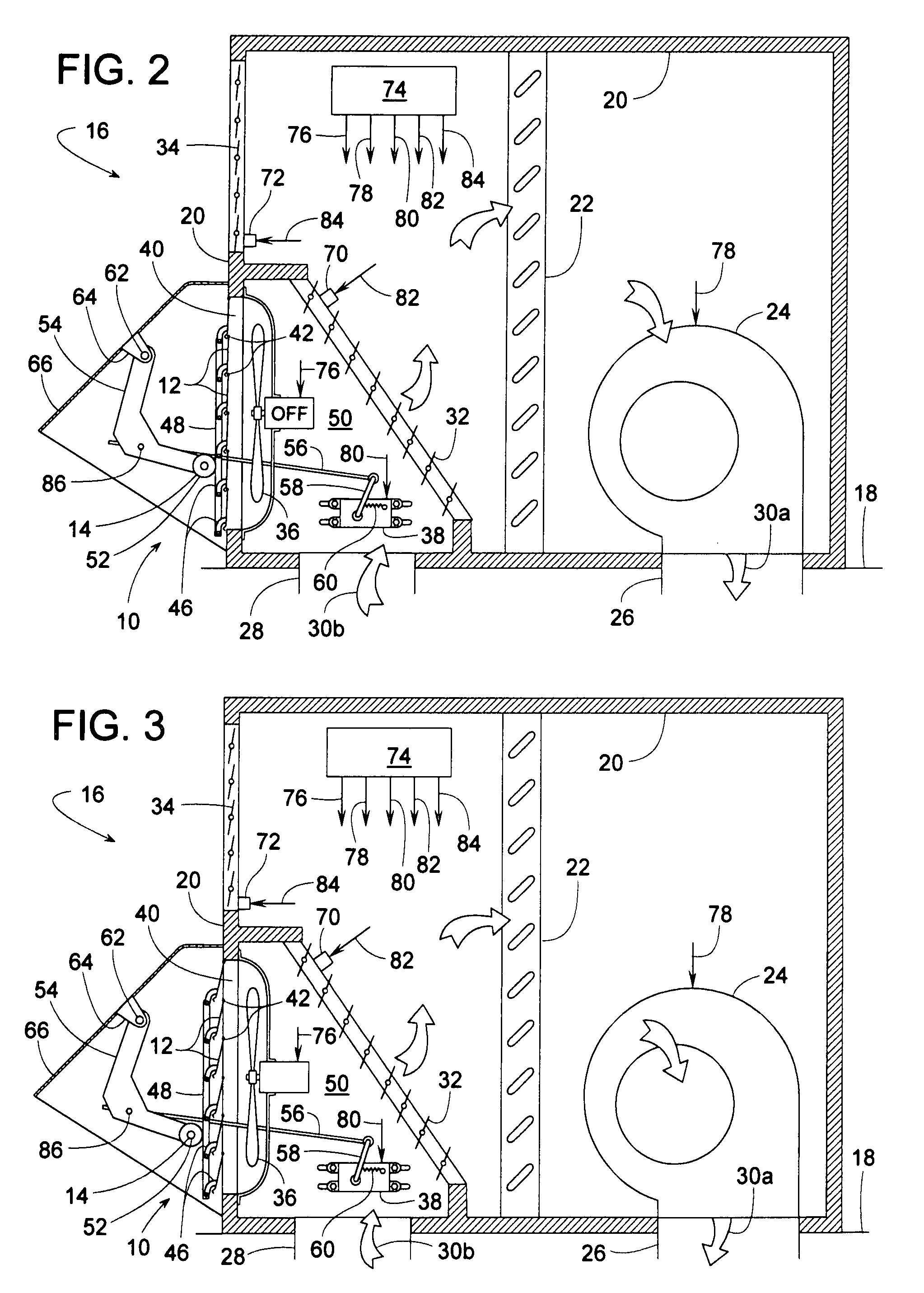Actuator for a fan-powered damper
a technology of damper and actuator, which is applied in the direction of lighting and heating apparatus, heating types, ventilation systems, etc., can solve the problems of reducing the efficiency of the blade when fully open, inaccurate blade positioning, and increasing the cost of the blad
- Summary
- Abstract
- Description
- Claims
- Application Information
AI Technical Summary
Benefits of technology
Problems solved by technology
Method used
Image
Examples
Embodiment Construction
[0024]FIGS. 1-8 illustrate an air damper apparatus 10 that includes a plurality of damper blades 12 actuated by air pressure with the blades' pivotal travel being limited by a variable position abutment 14. Although damper 10 can be used in a wide variety of applications, damper 10 will be described, for sake of example, as being an exhaust damper for an HVAC air handler 16 such as those used for cooling or heating a comfort zone within a building 18.
[0025]In this example, air handler 16 comprises a housing 20 (e.g., a sheet metal enclosure), a heat exchanger 22 for heating or cooling air 30, a blower 24 for moving air 30, a supply air duct 26 for conveying conditioned air 30a to a comfort zone, a return air duct 28 for conveying used air 30b back to housing 20, a return air damper 32 for selectively directing air 30 either outside and / or to heat exchanger 22, a fresh air damper 34 for conveying outdoor air 30c into housing 20, exhaust air damper 10 for determining the amount of ret...
PUM
 Login to View More
Login to View More Abstract
Description
Claims
Application Information
 Login to View More
Login to View More - R&D
- Intellectual Property
- Life Sciences
- Materials
- Tech Scout
- Unparalleled Data Quality
- Higher Quality Content
- 60% Fewer Hallucinations
Browse by: Latest US Patents, China's latest patents, Technical Efficacy Thesaurus, Application Domain, Technology Topic, Popular Technical Reports.
© 2025 PatSnap. All rights reserved.Legal|Privacy policy|Modern Slavery Act Transparency Statement|Sitemap|About US| Contact US: help@patsnap.com



